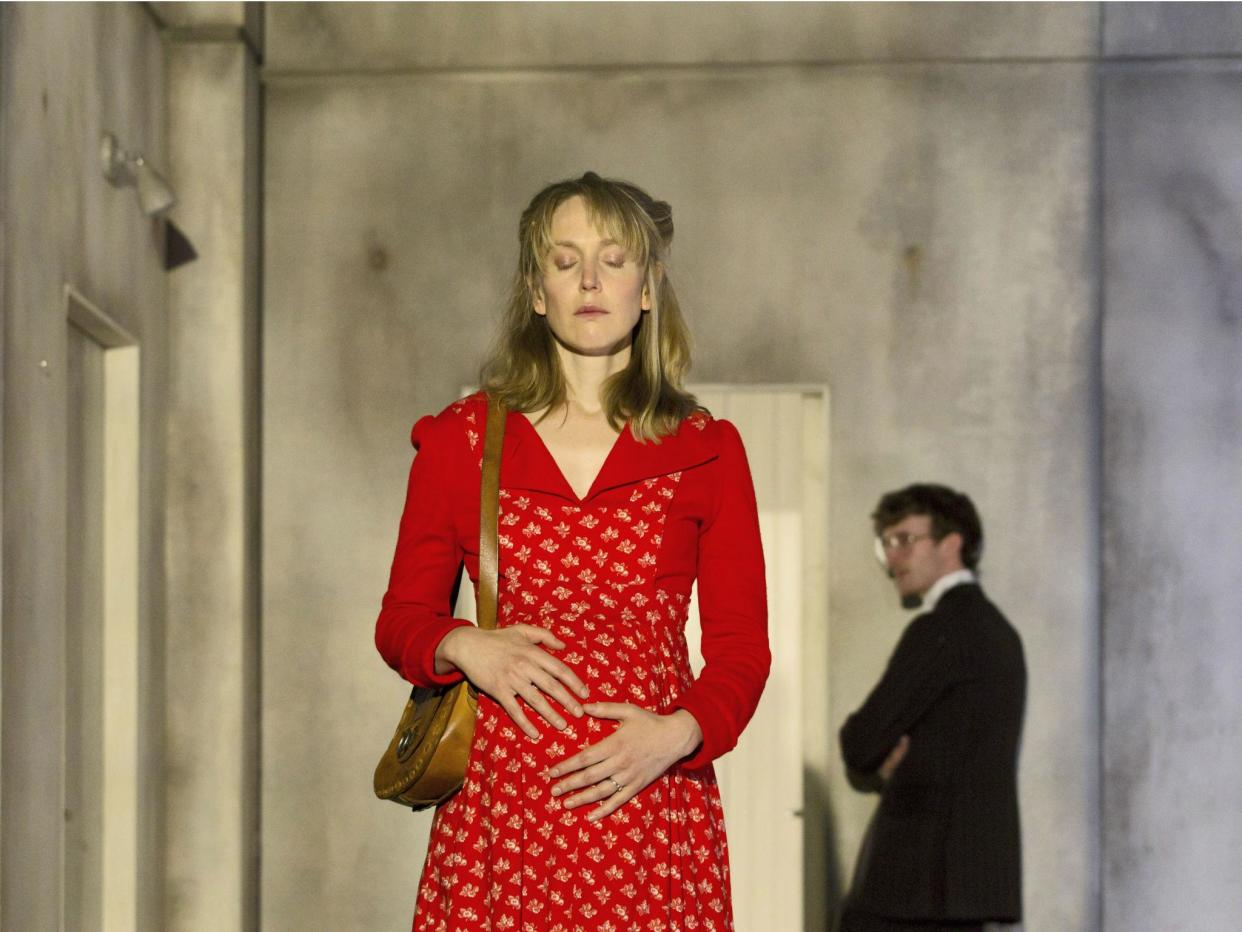Anatomy of a Suicide, Royal Court, London, review: Hattie Morahan mesmerises as Carol

The lives of three generations of women from the same family – and the painful legacy passed from mother to daughter – are explored in Alice Birch's latest collaboration with director Katie Mitchell. Their stories are played out simultaneously on stage and the text is scored like a piece of music as dialogue from one scene (“That's quite normal”) overlaps with the other two so that we seem to be listening to a rather cryptic “round” and as situations recur in harsh counterpoint.
In the 1970s, Carol (Hattie Morahan) tries to take her own life. She doesn't succeed and goes on to have a baby daughter, but the death-wish won't relax its grip. She determines to stay as long as she possibly can for the sake of her child, but knows that eventually she will have to leave. In the late 1990s, Anna (Kate O'Flynn), a recovering heroin addict, finds happiness in her marriage to a young film-maker but the birth of their daughter triggers a terrible breakdown. In the near future, Bonnie (Adelle Leonce) can't cope with any attempts at intimacy from her ardent female admirer and dreads the idea of having children of her own.
Anatomy of a Suicide is a powerful, unflinching look at a family afflicted with severe depression and mental illness. The fact that it's presented as a triptych of plays performed side by side serves to heighten our sense of the reverberating chaos passed on after a maternal suicide. At first, I thought that its unusual form might put a deterministic slant on the proceedings which would be unwarranted because there is no such thing as a “suicide gene” nor grounds for talking about inevitability even in circumstances as desperate as the characters find themselves in here. I mustn't give away too much except to say that nothing is shirked here – devastating despair or the very faint possibility of hope at the end (the last direction is “The light changes. Just a little.”).
In her characteristically punctilious production, Katie Mitchell draws performances of extraordinary intensity and precision from these actresses. Morahan mesmerises as Carol, aloof in the misery of the guardedly desperate housewife; O'Flynn is heart-rendingly vulnerable during Anna's post-natal psychosis. Leonce superbly suggests the strain of holding turbulent emotions in check. The set by Alex Eales, a dingy grey room with seven doors, looks like the essence of depression. Recommended.


